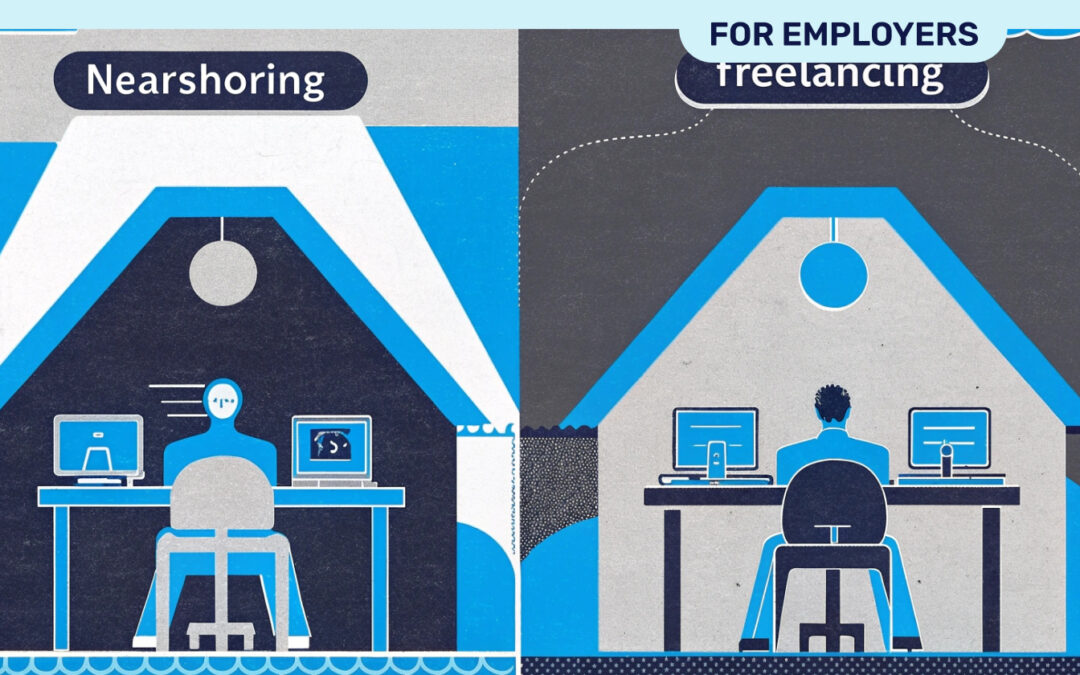
How to increase revenue? Growing fast and smart
When, who, and why are introduction videos essential in businesses?

An introduction video is more than just a digital hello—it’s your first impression, virtual handshake, and brand voice all in one. We live in a world where visual information means almost everything. From newspapers to radio news to television, and followed by YouTube and TikTok, everything is evolving into audiovisual engagements. Whether you’re welcoming customers, onboarding new team members, or evaluating job applicants, using video for introductions is becoming a strategic necessity. Of course, a content strategist, a brand manager, or a public relations specialist can help you with this, but we are covering some basics today, like:
- Why introduction videos are vital in today’s digital business world
- How to craft compelling company intros for customers and clients
- What to include in onboarding videos for new hires
- How to create intros for strategic partners and investors
- When and how to request intro videos from job applicants
- How to assess candidate videos for hiring decisions
- Why Latam talent excels with video communication
Let’s dive into the rising impact of the introduction video and how you can use it to scale your company.
Why you should care about introduction videos
Introduction videos help businesses communicate more clearly, personally, and efficiently. They can humanize your brand, accelerate trust, and simplify evaluation—whether you’re hiring or marketing.
Here’s why they’re so effective:
- Viewers retain 95% of a message in video, versus 10% when reading text
- You only have a few seconds to make a strong first impression
- People respond more emotionally to visuals and sound than to written content
- The fact that there is better engagement with narratives that include visuals over only audio or only text formats has solid evidence
From brand storytelling to candidate screening, using an introduction video enables you to showcase the real people and values behind your business. So, if you want to hire marketing professionals to improve your branding, content and web and video strategy, try out scheduling a call or filling out the survey and receive a pool of candidates within 8 days, with a risk-free hiring guarantee, and saving up to 40% on employees’ salaries thanks to nearshoring working models.
Company introduction videos that attract customers
If you’re looking to earn a customer’s trust in under two minutes, a company introduction video is your best ally.
Elements of a high-impact business intro video
| Key element | Why it matters |
| Attention-grabbing opener | Hooks your audience and increases engagement |
| Clear value proposition | Explains what your company does and why it matters |
| Visuals & branding | Reinforces recognition through colors, logo, and tone |
| Human connection | Adds credibility by introducing your team or leadership |
| Clear call to action | Guides viewers to take the next step (e.g., schedule a demo, sign up) |
keep your intro video between 60 to 120 seconds, and make sure the introduction video appears in your video title and metadata for SEO benefits.
Pro tip: highlight your remote Latin American team to position your company as diverse, globally enabled, and cost-efficient.
Video intros for onboarding new hires
An onboarding introduction video can accelerate new employees’ comfort level and productivity, especially in remote settings.
What to include in an employee onboarding video
- A personal welcome from the founder or leadership
- Company mission, values, and milestones
- Introductions to key departments and team members
- Tutorials for tools and systems used by your team
- Tips for success during the first 30–60 days
Use this video to set expectations and emphasize your company culture, especially if you’re hiring across different time zones, such as Latin America-based developers or marketers.
An engaging introduction video can reduce miscommunication and increase new hire engagement by giving them an authentic glimpse into your workplace from day one.
Partner and investor introduction videos: make your pitch stand out
If you’re aiming to secure new partnerships or investors, a short and persuasive video can make your pitch more relatable and trustworthy.
Focus on:
- What problem does your company solve
- What makes your solution unique
- Traction or metrics proving your success
- Your growth vision and future roadmap
- A direct ask: schedule a meeting, invest, or collaborate
Keep your tone confident and professional, and make sure your introduction video speaks to your company’s credibility, scalability, and culture.
When to ask candidates for an introduction video
In the hiring process, an introduction video helps you evaluate more than just a resume. It gives insight into a candidate’s personality, communication skills, and professionalism.
Ideal stages to request a candidate video:
| Stage of the hiring process | Why it’s effective |
| Application | Helps pre-screen for communication and engagement |
| Pre-interview | Replaces a first-round phone screen with visual cues and clarity |
| Post-interview | Used as a final impression for close-call candidates |
Hint: if you’re hiring from Latam, intro videos help overcome language or accent concerns early and fairly—without scheduling complexities.
Why candidate introduction videos improve hiring outcomes
Here’s why adding an introduction video request helps your recruitment process:
- Visual confirmation: body language, tone, and delivery reveal more than a CV ever could
- Creativity & effort: the way a candidate approaches the task says a lot about their initiative
- Cultural alignment: assess if they would thrive in your team’s environment
- Efficiency: helps narrow down your top applicants early without needing lengthy interviews
Many Latam candidates, particularly those used to remote work, are excellent at presenting themselves via video, often reflecting their adaptability, digital literacy, and professionalism.
How to evaluate a candidate’s introduction video
When reviewing an introduction video from a job candidate, focus on the following:
Candidate video evaluation checklist
- Initial impact
- Did they engage you within the first few seconds?
- Communication
- Was their message clear, concise, and relevant to the role?
- Confidence & tone
- Did they present themselves as approachable and capable?
- Environment
- Was the video well-lit and professionally recorded?
- Effort level
- Did they prepare, or was it rushed and underdeveloped?
Don’t be swayed by flashy editing. What matters is authenticity, clarity, and value—qualities that are key for remote work success.
How to request a candidate introduction video (without scaring them off)
It’s important to strike a balance between encouraging video submissions and making candidates feel comfortable.
Sample request template:
“As part of your application, we’d love a short video (60–90 seconds) where you introduce yourself, share what excites you about this role, and highlight something you’re proud of. You can record with your phone or laptop—no special equipment needed!”
Reassure candidates that you’re not looking for perfect production—just a genuine introduction that shows who they are.
Would you use this strategy to asses potential candidates? as easily as scheduling a call, filling out the survey or asking about our great partnerships, you can receive a pool of candidates for any open position that you have And we definitely can incorporate Introduction videos into the process.
Tools to simplify the video process
If you’re implementing introduction videos into your hiring or onboarding workflows, these tools can help:
- Loom – ideal for easy screen and webcam recordings
- Veed.io – great for editing and captioning
- Willo – organizes and stores candidate videos in one place
- Google Drive + Forms – simple and cost-free collection method
Final takeaway: Video introductions are your new competitive edge
The way we communicate in business is evolving, and video is leading the charge. Whether you’re attracting customers, hiring top talent, or closing partnerships, a well-crafted introduction video adds depth and trust to your interactions.
Companies that embrace video-first communication:
- Reduce hiring time and improve candidate evaluation
- Build stronger relationships with clients and partners
- Boost retention by improving onboarding experiences
- Strengthen remote teams through better connections
If you’re not already hiring from Latam, consider it. With strong digital skills, excellent video communication, and cultural compatibility, Latin America offers a near-shore advantage that’s hard to ignore.
Are you looking to hire Latin American talent? Schedule a commitment-free meeting today with us to discuss your hiring needs.








